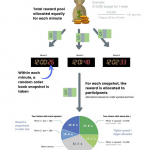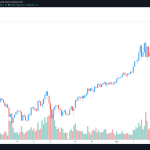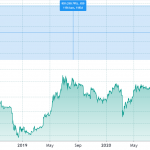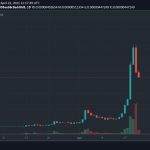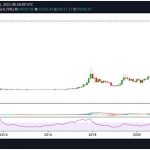It has been a long, long, long road for the global photovoltaic industry and its participants from its early days with few manufacturers and support primarily limited to oil companies looking for a feel-good business unit to what seemed like its overnight success in the mid-2000s. In 1977 the industry had 1.74 MWp of capacity to produce PV cells. At the end of 2017 the industry had 98 GWp of capacity to manufacture PV cells.
The men and women responsible for the PV industry growth from its beginnings as an oil company hobby to the fastest growing source of electricity in the world often gather at scientific conferences and drink to their old, pioneering days. Working in the PV industry in the 1970s, 1980s and 1990s required more than hope, it required a deep and steadfast belief that the industry would prevail, would become mainstream and would set the tone for the future of electricity generation — because … there was a time when the solar struggle was over whether it would survive as an industry at all.
It is easier to believe in the future of solar today than it was decades ago. This article honors eight of the women who believed and persevered and pioneered the PV industry of today and without who it might be a very different industry indeed.
Each woman has in her own way championed the cause of climate change as well as the cause of the solar industry and has worked tirelessly educating, conducting research and deploying solar technologies to ensure the future of the industry.
This article honors the contributions of women in science and business and whose careers stand as an example to young women around the world of what is possible.
Since 2003, Dr. Kaizuka has served as the Japanese representative to IEA PVPS Task 1, an international working group for “Strategic PV Analysis & Outreach.” She is one of the authors of Task 1’s key annual report “Trends in Photovoltaic Applications” and provides analysis of global PV industry as well as Japanese PV market trends. Dr. Kaizuka also contributes to global corroboration on PV standards as the duty chair of the national committee of IEC TC82.
The bare facts of a person’s resume do not describe the dedication, the quiet passion, the commitment and joy that that person brings to their work. In solar, work is most often a calling. Dr. Kaizuka is committed to promoting women in business and research and serves as the chair of WinPVJ, Division of Women in Photovoltaics, JSPS 175th Committee on Innovative Photovoltaic Power Generating Systems and PVTTMT, a business women’s network.
The PVSEC Special Award, along with the Cherry Award and the Becquerel Prize, is one of the distinguished scientific awards in the global PV industry. Over the many years that these awards have been presented there have been few women recipients. The PVSEC Special Award is presented to honor a PV professional’s outstanding contributions for technology development and the promotion of photovoltaic solar energy conversion. The decision is made by the PVSEC organizing committee. In 2017 Dr. Kaizuka was awarded the PVSEC Special Award at the PVSEC-27 held in Otsu, Japan for her tireless commitment to the science and application of photovoltaic technologies.
People who work with Dr. Kaizuka describe her as dedicated, of course, and as knowledgeable, patient, willing to sacrifice her time for her industry and friends and a true mentor to young women and men entering the industry.
Renate Egan, UNSW, Australia
Basic research is a creative discipline relying as much on inspiration and ideas as on data, repeatability and experimentation. People who can marry the creative with the technical while focused on the best use of data are rare, and they are crucial to the solar industry.
Currently an Associate Professor at the University of New South Wales, Australia, Dr. Renate Egan leads UNSW’s activity in one of the last remaining bastions of pure research in the solar industry, the Australian Centre for Advanced Photovoltaics (ACAP). In her role, Dr. Egan manages ACAP’s projects and coordinates activities with ACAP’s funding agent the Australian Renewable Energy Agency (ARENA). Her administrative activities include balancing the needs of ARENA with the requirements of ongoing research.
During her career, Dr. Egan has served as managing director of R&D at Suntech Australia as well as CTO and managing director at CSG Solar AG. Her focus is on manufacturing costs, new technology development and the development, management and use of data for better analysis and decision making.
Those who have worked with Dr. Egan say that she has been a passionate and untiring supporter and promoter of solar energy, especially photovoltaics, for decades. Dr. Egan consistently pushes the boundaries of photovoltaic research and the use of better — not just more — data. Dr. Egan is a Co-Founder and Chair at Solar Analytics, a start-up providing software for predicting energy generation from solar energy systems as well as a Partner at Solinno, another Australia-based start-up company that consults in project management, risk assessment, policy and process documentation, IP development and management and project funding.
Dr. Egan’s commitment to the science, engineering and to the analytics required to keep the global PV industry on its trajectory to becoming a mainstream electricity source serves as an example to young women considering a career in the solar industry.
Darlene McCalmont, McCalmont Engineering, U.S.
Of her career, Darlene McCalmont says, “I always say I left the dark side of chemical manufacturing for the bright side of solar even though I feel my operations experience in the chemical industry has played well into why I have been successful in the solar industry. Being part of the solar industry growth has definitely left me feeling good every day about what I do and the contribution to the environment I have made.”
Darlene McCalmont graduated from Ohio State, one of the few women in the late 1970s to earn a degree in Chemical Engineering. Following graduation, she went to work for Celanese Corp., a chemical processing company based in Texas. While in Texas she earned her MBA. She married her childhood sweetheart Tom and they moved to California where Darlene worked for Safety-Kleen, a chemical cleanup company.
Solar installation pioneers often say that they started their business out of their garages and with a truck. After the chemical company was sold and subsequently downsized, Darlene, together with her husband Tom, founded Regrid Power, a solar installation company in the Bay Area. They now run a thriving solar engineering firm, McCalmont Engineering.
People who work with Darlene describe her as detail oriented, operationally excellent, exacting but fair, organized, insightful and thoughtful. One of Darlene’s favorite expressions is “In God we trust. All others bring data,” which pretty well sums up her approach to operations and execution. Her common-sense approach is true to her no-nonsense, Midwest sensibility, farm girl origins.
Common sense and a well-grounded world view is not the whole story; instinct and knowing when to act on it is crucial to business and in life. Back to Darlene’s days working for the California chemical cleanup company; one day a particularly noxious chemical came in to the facility on a truck from somewhere up north. Darlene knew that the chemical was highly dangerous. In the middle of the night her sixth sense kicked in and believing that there was something not-quite-right about this particular truck she went to the facility at 1am to process it through. She was right. The chemical was in the incorrect type of truck to contain it, and it was gradually etching its way through the bottom of the truck.
Terry Jester, Silicor Materials, Iceland
In the global solar industry, all roads eventually wind back to ARCO Solar, one of the U.S. pioneers of photovoltaic manufacturing. ARCO was formed in 1977 after Atlantic Richfield acquired Solar Technology International, a company founded by PV industry pioneer Bill Yerkes.
ARCO was the first PV manufacturing company to produce 1 MWp of modules in one year. This may seem small by today’s standards, but this achievement helped put the PV industry on the road to today’s massive scale and lower costs.
Terry Jester, a pioneer in PV manufacturing, began her solar career in 1979 at ARCO Solar as a mechanical engineer working on solar module design and reliability. She has spent 38 years working on producing and refining the cost and performance of solar cells and modules. Her early work focused on creating a product that could be warranted for 25 years, which was accomplished in the late 1980s.
Terry remained with ARCO through several name and ownership changes, from ARCO’s acquisition by Siemens, to Shell and finally to SolarWorld. She served as a director at SunPower. In June 2008, she joined Hudson Clean Energy as their Entrepreneur in Residence. Terry joined Calisolar in 2011 as their Senior VP of Operations and stayed with the company through its name change to Silicor Materials, leading the company as its CEO and now Chairman.
People who work with Terry Jester describe her as focused on manufacturing excellence and as unfailingly kind, supportive and a wonderful mentor to young women seeking an engineering career.
Sheila Bailey, NASA, U.S.
Photovoltaic technologies have been a part of space travel for decades. So, young women seeking a career in PV look not just at the ground, gaze up at the sky.
Sheila Bailey’s career highlights what women can achieve in science and engineering. She has been a senior physicist working in photovoltaics at NASA Glenn Research Center (GRC) for 33 years, has authored and co-authored over 170 journal and conference articles and 16 book chapters, and holds two patents. Recent projects include nanomaterials and nanostructures for space photovoltaics, quantum wire III-V solar cells and quantum dot alpha-voltaics. She is on the Editorial Board of “Progress in Photovoltaics.”
The list of her accomplishments is long. She has a B.S. from Duke University in physics, a M.S. in physics from the Univ. of N.C. at Chapel Hill, and a Ph.D. in condensed matter physics from the University of Manchester in England. She spent a post-doctoral year at the Royal Military College (part of the Univ. of New South Wales) in Canberra, Australia.
Sheila is the recipient of the faculty excellence award from Baldwin Wallace College and the Federal Women’s Program award. She is an Ohio Academy of Science “Exemplar.” She was awarded the NASA Exceptional Service Medal for her work in space photovoltaics. She has completed the Office of Personnel Management’s Executive Potential Program. She was inducted into the Ohio Women’s Hall of Fame in 2003 by Governor Taft.
Sheila is a member of the American Physical Society and a speaker for the American Institute of Physics Visiting Scientist Program. She is a member of AIAA Aerospace Power Systems technical committee and past member of the IEEE Electron Devices Society Photovoltaic Devices Committee. She is president of the Lewis Engineers and Scientists Association. She was an adjunct professor at Baldwin Wallace College for 27 years and is currently an associate faculty member of the International Space University.
Along with all the above accomplishments, Sheila is an advocate for women in STEM careers and is an active speaker with the NASA GRC Speakers Bureau as well as the APS speakers. When people describe Sheila, they note her dedication of course, but also her sense of humor and fun, evidence of a life well lived doing what she loves.
Sarah Kurtz, University of California Merced, U.S.
Dr. Sarah Kurtz joined NREL in 1985 as a post-doc and now teaches at the University of California Merced. She has the honor of being the first woman to win the PV industry’s prestigious Cherry Award.
The Cherry Award was established in 1980 and is named for William R. Cherry, a PV industry Pioneer. It is presented annually at the IEEE PVSC in the U.S. During her acceptance speech at the 2012 conference Dr. Kurtz said: “Persistence in the face of skepticism should be our response when the world says it cannot be done.” This sentence sums up her career and her philosophy.
Dr. Stuart Wenham, CTO, Suntech, and the winner of the 37th Cherry Award presented Dr. Kurtz with the 38th Cherry Award at the 2012 conference. Presenting the award, Dr. Wenham said, “Sarah has worked tirelessly for 20 years. Dr. Kurtz’s body of work has helped the acceleration of growing high-quality cells and measuring multi-junction cells. More recently, she has looked at reliability issues of integrating multi-junction cells and solar PV in general into larger systems.”
Generosity sums up the career of a woman who has dedicated her life to solar research, committed her time to promoting the science of the industry through her steadfast focus on scientific excellence. People who know her note her dedication, focus and willingness to mentor others.
Christiana Honsberg, Arizona State University, U.S.
Dr. Christiana Honsberg is the second woman to win the Cherry Award, accepting this honor in 2015 at the IEEE PVSC in New Orleans. Among other things, including her mentoring of young PV professionals over the years, she was honored for her work advancing the understanding of intermediate band, interband and quantum well approaches to PV manufacturing. Dr. Honsberg is a co-inventor of the Very High Efficiency Solar Cell (VHESC) that combines optical/solar cell architectures to produce a sum-of-the-efficiencies result of 42.8 percent.
Professor Honsberg is the Senior Sustainability Scientist, Julie Ann Wrigley Global Institute of Sustainability and Professor, School of Electrical, Computer and Energy Engineering, Ira A. Fulton Schools of Engineering at Arizona State University. She earned her PhD at the University of Delaware where she was an associate professor specializing in high performance solar power.
Professor Honsberg has tirelessly supported women in STEM.
Nicola Pearsall, Northumbria University, U.K.
Professor Nicola Pearsall is a lecturer and researcher and the director of the Northumbria Photovoltaics Applications Centre and leader of its Energy Systems research group. Professor Pearsall earned a degree from the University of Manchester Institute of Science and Technology with an honors degree in Physics and earned her PhD for research into indium phosphide solar cells for space applications from the Cranfield Institute of Technology. She joined the faculty at Northumbria University in 1989 while completing her PhD and was awarded the title of Professor in 2004.
Along with her responsibilities to the university and her students, Professor Pearsall is a member of the European Photovoltaic Technology Platform and is the U.K. representative for the Solar Europe Industry Initiative.
As with all the women briefly profiled here, Nicky is dedicated to the global industry and has deep, lasting ties within it. She has served as chairperson of many committees, chaired conference sessions, presented research results at countless conferences and always reserves time for friends and acquaintances in the industry, all of who speak of her as a too humble example of a dedicated, tireless solar industry citizen.




